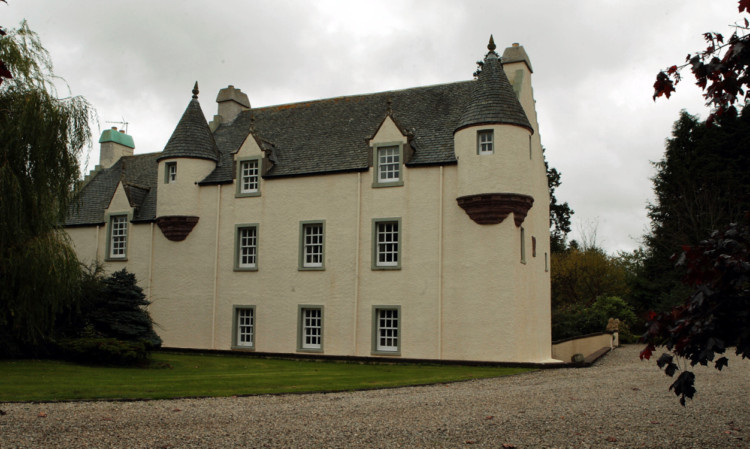A historic 17th Century Mearns castle once visited by Robert Burns has gone on the market for around £1 million.
Monboddo Castle near Fordoun, by Laurencekirk, which sits in more than three acres of ground, has been transformed into a family home.
Also known as Monboddo House, the building was the birthplace and home of James Burnett, Lord Monboddo, the 18th Century judge, soldier and agricultural improver.
Burnett is famously said to have anticipated the Darwinian theory of evolution.
Among his friends was Dr Samuel Johnson who, accompanied by James Boswell, dined with him at Monboddo in August 1773 when passing through the Mearns on their documented journey to the Western Isles.
Robert Burns is also known to have visited the castle and was a frequent visitor to Burnett’s Edinburgh home.
More than 375 years on from its original construction, the renovated property now boasts a hallway, drawing room, sitting room, kitchen/breakfast room, utility room, cloakroom, five bedrooms, a bathroom, garage and stables/stores.
The property schedule from agents Savills, based in Brechin, states: “Monboddo Castle is a very fine and fully restored castle dating from 1635.
“It is an imposing yet easily manageable house, which retains many of its original features, including turrets, crow stepped gables, gun loops and shot holes.
“The restoration in the late 1970s was done to an extremely high standard, retaining the character of the original house.
“Since 2009 an ambitious programme of further improvements and renovations has been undertaken.”
The estate of Monboddo belonged to the Barclays as far back as the 13th Century.
By 1593 it is known to have come into the possession of James Strachan, from whom it passed to the Wisharts of Pitarrow and then the Carnegies.
In 1634, Colonel Robert Irvine part of a Scots regiment which had served with Gustavus Adolphus, King of Sweden retired from military life and came to live at Monboddo.
The main building was constructed in 1635 and was initially described as “a simple oblong residence, two storeys and an attic high.”
Between 1866 and 1867 Monboddo was significantly extended and “improved” at a cost of £2,000 to a design by James Matthews of Aberdeen.
Three generations of the Burnetts of Monboddo served in India and for many decades the house was scarcely lived in until 1939, when James Malcolm Burnett returned from Africa to farm at Monboddo.
Sometime after the Second World War he returned to Africa and Monboddo gradually fell into complete disrepair.
In 1977 the castle was restored with a 19th Century addition removed to leave the shell of the original building of 1635.
For more information, call Savills on 01356 628600.
